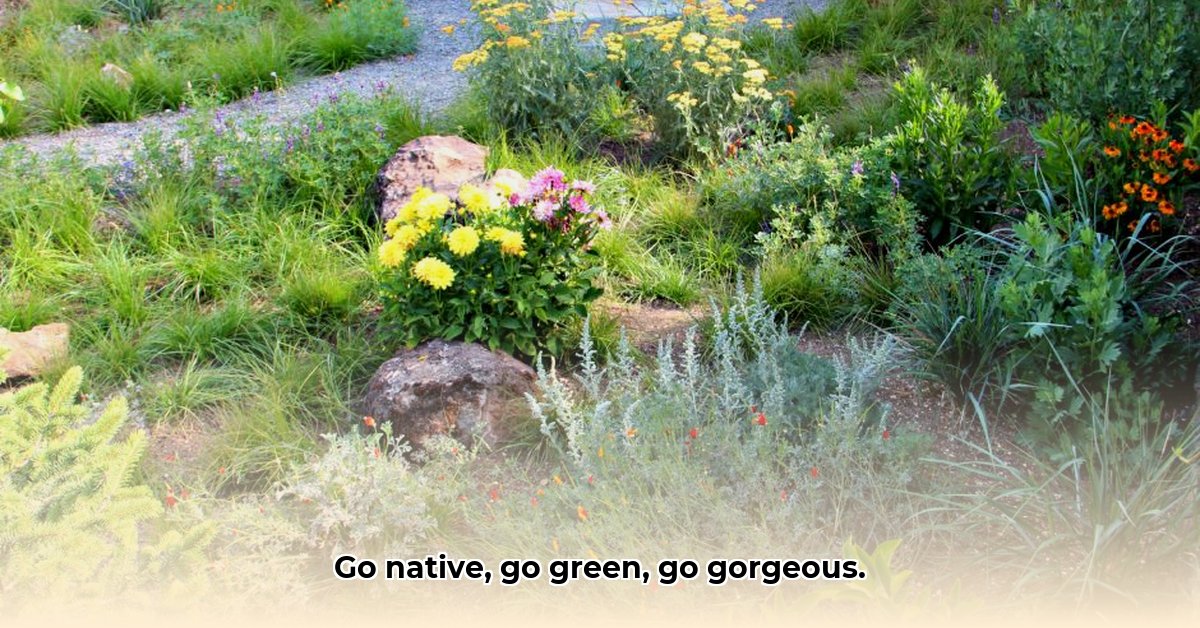
Why Choose Native Plants? Unlocking a Thriving, Eco-Friendly Garden
Want a beautiful garden that's also a haven for wildlife and requires minimal maintenance? Sustainable native plant gardening offers the perfect solution. This approach utilizes plants indigenous to your region, creating a landscape that's both aesthetically pleasing and environmentally beneficial. By embracing native species, you're not only reducing your environmental impact but also creating a vibrant ecosystem that supports local biodiversity. Isn't that a rewarding prospect? For beautiful basket flowers, check out this resource.
The Abundant Benefits of Native Plants: Ecology Meets Aesthetics
Native plants offer a multitude of advantages, exceeding mere aesthetic appeal. They are perfectly adapted to your local climate and soil conditions, resulting in significant water conservation and reduced maintenance. This translates to less time spent watering, fertilizing, and weeding, allowing you more time to enjoy your garden.
- Water Conservation: Native plants are naturally drought-resistant, significantly reducing water consumption compared to non-native species. This is crucial in areas with water scarcity. Don't you want to conserve a precious resource?
- Biodiversity Boost: Native plants are the cornerstone of a healthy ecosystem, providing food and habitat for a wide array of pollinators, birds, and other wildlife. A diverse garden teeming with life? That's the native plant promise.
- Reduced Maintenance: Their inherent hardiness translates to less weeding, fertilizing, and pest control, making them incredibly low-maintenance options. More time for relaxation, less time for toil!
- Soil Health Improvement: Native plants contribute to better soil structure, improving water retention and preventing erosion, creating a healthier foundation for your garden.
Dispelling the Myths: Native Plants are Anything But Dull
A common misconception is that native plants lack visual appeal. This couldn't be further from the truth! With careful planning, you can create a stunning garden showcasing a diverse range of colors, textures, and forms throughout the seasons. The beauty of native plants lies in their natural integration with the local environment, creating a harmonious and vibrant landscape.
Your Step-by-Step Guide to a Thriving Native Plant Garden
Here's a practical guide to help you embark on your sustainable native plant gardening journey:
Site Assessment: Understanding Your Garden's Potential: Before selecting plants, thoroughly assess your garden's conditions. Note the amount of sunlight (full sun, partial shade, full shade), soil type (sandy, clay, loam), and drainage. This information will guide your plant choices. Local agricultural extension offices or native plant societies can provide expert assistance.
Plant Selection: Choosing the Right Champions for Your Garden: Select native plants suited to your specific site conditions. Local nurseries specializing in native plants are invaluable resources. They can offer personalized advice and access to a wide variety of species. Mix plants of varying heights, textures, and bloom times to create visual interest and provide continuous color throughout the seasons.
Planting and Basic Care: Embrace Minimal Intervention: When planting, dig holes twice as wide as the root ball, gently place the plant, and water deeply. Apply organic mulch (such as wood chips or shredded leaves) to retain moisture, suppress weeds, and regulate soil temperature. Native plants generally require minimal care, thriving with less watering and fertilizing than non-native varieties.
Pest and Disease Management: Nature's Integrated Approach: Native plants are naturally more resistant to local pests and diseases. Promote healthy plant growth through proper spacing, appropriate watering, and avoiding over-fertilization. If problems arise, research eco-friendly solutions, such as introducing beneficial insects or using organic pest control methods.
Long-Term Care: Adapting to a Changing Climate: Your native garden is a dynamic ecosystem. Monitor your plants for signs of stress or disease, adjusting watering schedules as needed. Climate change necessitates ongoing adaptation. Stay informed about climate projections for your region and be prepared to adjust your gardening strategies accordingly.
Resources and Further Learning: Cultivating Your Gardening Expertise
Continue your sustainable native plant gardening journey by exploring these valuable resources:
- Local Native Plant Societies: Connect with local experts for personalized advice and support.
- Online Resources: Numerous websites and forums offer valuable information and inspiration.
- Books: Explore specialized literature on native plant gardening for detailed guidance.
- Local Nurseries: Your local nurseries are excellent sources of native plants and expert advice.
Conclusion: Embrace the Beauty and Benefits of Sustainable Native Plant Gardening
Sustainable native plant gardening is a rewarding endeavor, offering a wealth of environmental and personal benefits. By embracing this approach, you're contributing to a healthier ecosystem while creating a beautiful, low-maintenance garden that flourishes with minimal intervention. Start your journey today, and experience the magic of a truly sustainable landscape!